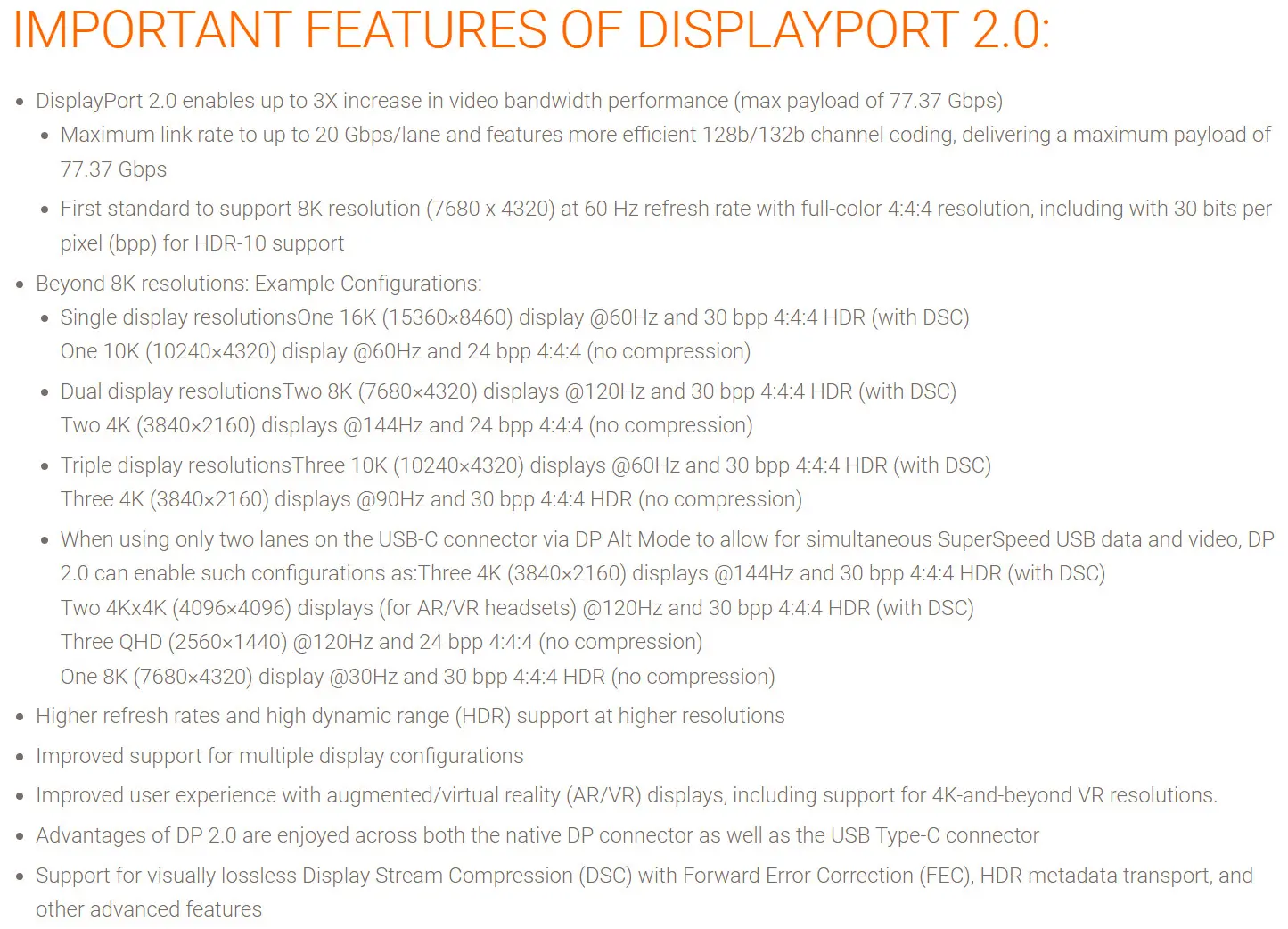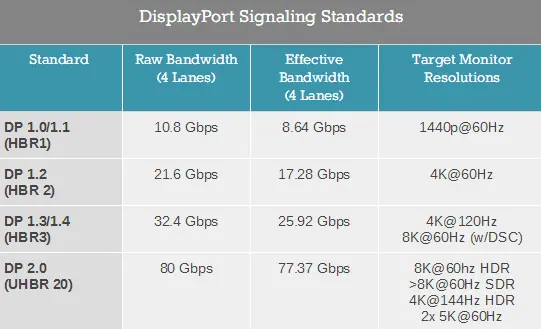The Video Electronics Standards Association (VESA) announced today that the first batch of video sources and display devices supporting DisplayPort uhbr (ultra-high bit rate) (DisplayPort Standard Version 2.0 supports higher data link rate) have been certified in the DisplayPort uhbr certification program.

In order to achieve this important milestone, the uhbr chipset reference source and display design provided by AMD, MediaTek and Realtek successfully met the PHY, link and interoperability test requirements listed in the DisplayPort 2.0 compliance test specification (CTS). The higher bandwidth achieved by uhbr supports various use cases, such as uncompressed 8K 60 Hz HDR, 4K 240 Hz HDR, two 4K 120 Hz HDR or four 4K 60 Hz HDR displays through one cable.


VESA also announced today that the qualified VESA DisplayPort authorized test center (ATC) is ready to start testing and certification of uhbr terminal products and conduct interoperability testing using approved test equipment and reference sink and source equipment. The engineering demonstration of the reference source and sink equipment settings from AMD and MediaTek will be displayed at the display week seminar and exhibition held in San Jose, California, from May 10 to 12, 2022, at booth VESA 214 of the San Jose Convention Center.
James Choate, VESA compliance project manager, said:
These recent developments in the DisplayPort uhbr certification program represent an important step in the promotion of new video, display and cable products that support higher resolution and refresh rate in the DisplayPort uhbr ecosystem.
The certification of uhbr reference equipment must be strictly tested to ensure that they meet the requirements in DisplayPort 2.0 CTS. We are pleased to announce that through our certification program, a set of reference chips have been verified to meet the requirements of DisplayPort 2.0 specification.
VESA now has a testing infrastructure to evaluate and certify OEM end products, and we are ready to work with the ecosystem to bring the next-generation DisplayPort chipset and IP to market.
Vince Hu, vice president of enterprise and general manager of computing business department of MediaTek, said:
We are very proud to be the first device adopter to obtain DisplayPort uhbr certification. With the functions brought by DisplayPort 2.0, we can develop advanced and powerful technologies that system manufacturers can use to completely change the highest quality visual experience of consumers.
VESA requires very rigorous testing before certification, which makes MediaTek's achievements even more impressive. We are honored to play a key role in VESA's efforts to ensure interoperability and provide industry-leading products to the market.
Syed Athar Hussain, vice chairman of VESA board of directors and senior researcher in AMD CVP and display field, said:
We are pleased to continue our in-depth cooperation with VESA in the development of DisplayPort 2.0 uhbr ecosystem by using AMD ryzen 6000 series processors as certification reference devices.
The DisplayPort uhbr certification program will ensure seamless interoperability of signal sources, cables and displays, and establish a strong ecosystem to give full play to the potential of DisplayPort 2.0 uhbr technology.
The uhbr rate defined by DisplayPort standard represents a new mode of display connection. It has unprecedented bandwidth and can promote smooth games, efficient video playback and professional display with resolution greater than 8K.
Yee Wei Huang, spokesman of Ruiyu technology and vice president of multimedia business department, said:
We are proud to announce that our first DisplayPort 2.0 RX solution and DisplayPort 2.0 TX solution have passed VESA's uhbr certification program. This will help customers quickly achieve end product certification and become part of VESA interoperability test plan.
With the new Realtek DisplayPort 2.0 Rx / TX solution, end users can enjoy more sensitive and higher resolution display in a variety of display applications. This provides a significant leap forward to meet the needs of the commercial and consumer markets, as high-quality displays and docking stations are evolving.